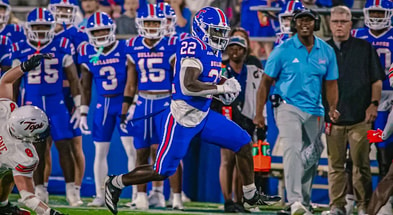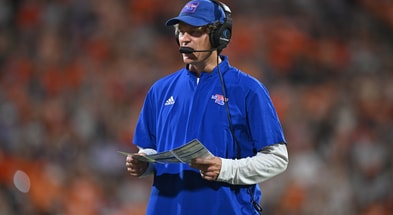Stat Attack: Delaware

Through this up-and-down rollercoaster of a 2025 football season, one thing had seemed certain about the Louisiana Tech Bulldogs: they could stop the run. But that belief took a major hit Friday night, when Tech surrendered 296 rushing yards (at 9 yards per carry) to a winless Sam Houston State team.
Even before the Homecoming victory, though, the Bulldogs’ defense had shown flashes of both dominance and vulnerability. They would blow up plays in the backfield on one series, then give up a long touchdown run on the next. And as the advanced stats show, the numbers tell that same complicated story.
Let’s start with Stuff Rate, a stat that measures how often a defense stops a rushing play at or behind the line of scrimmage. Louisiana Tech currently ranks 10th in the nation, holding opponents to less than one yard on 24.5% of all rushing attempts. That means nearly one out of every four runs against the Bulldog defense goes nowhere.
Then there’s Success Rate, which looks at how often an offense gains the yardage necessary to stay “on schedule” based on down and distance. Tech’s defense allows a successful play on just 35% of opponent rushes, the 12th-best mark in college football.
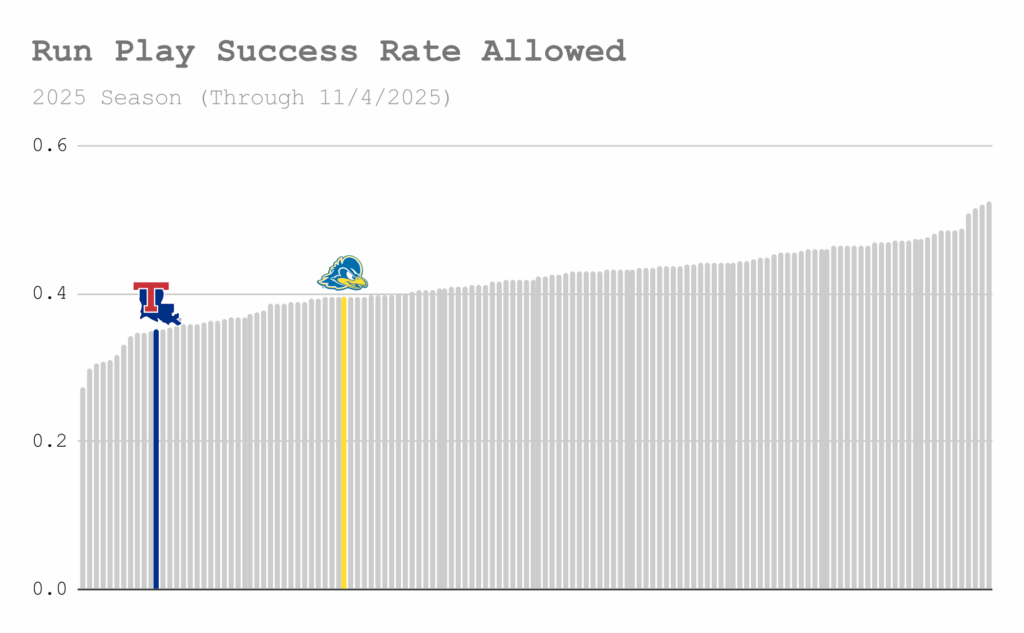
But note: Tech’s next opponent, Delaware, is not too far back at 39%.
Neither Tech nor Delaware gives up a high number of big plays on the ground. The problem is that when they do, they really pay for it.
So now let’s talk about Explosiveness, a metric that measures how much value a team gets out of its successful plays. For instance, a 10-yard gain and a 40-yard gain might both count as “successful” in terms of keeping a drive alive — but one is clearly far more damaging to a defense.
And when we look at season-long trends, both the Bulldogs and the Blue Hens both rank in the bottom six teams in college football in preventing explosive run plays:
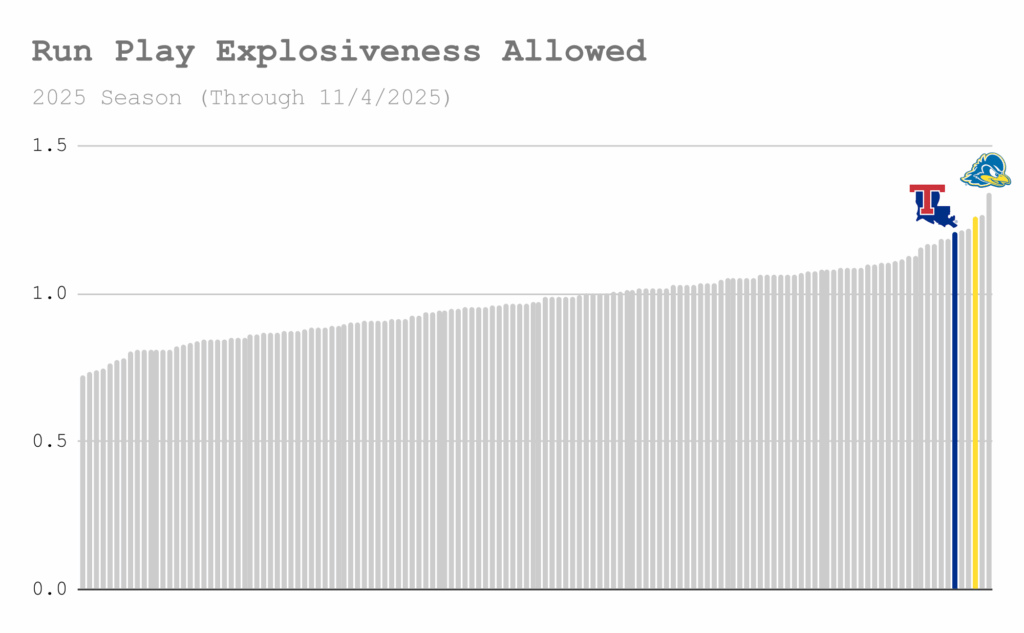
That leads to the big question heading into this matchup: which team can actually take advantage of the other’s Achilles’ heel?
And it’s not a given that either can. Both offenses have struggled to create chunk plays on the ground this year. Neither team’s rushing attack ranks highly in offensive rush explosiveness, meaning those 30–40 yard bursts have been few and far between:
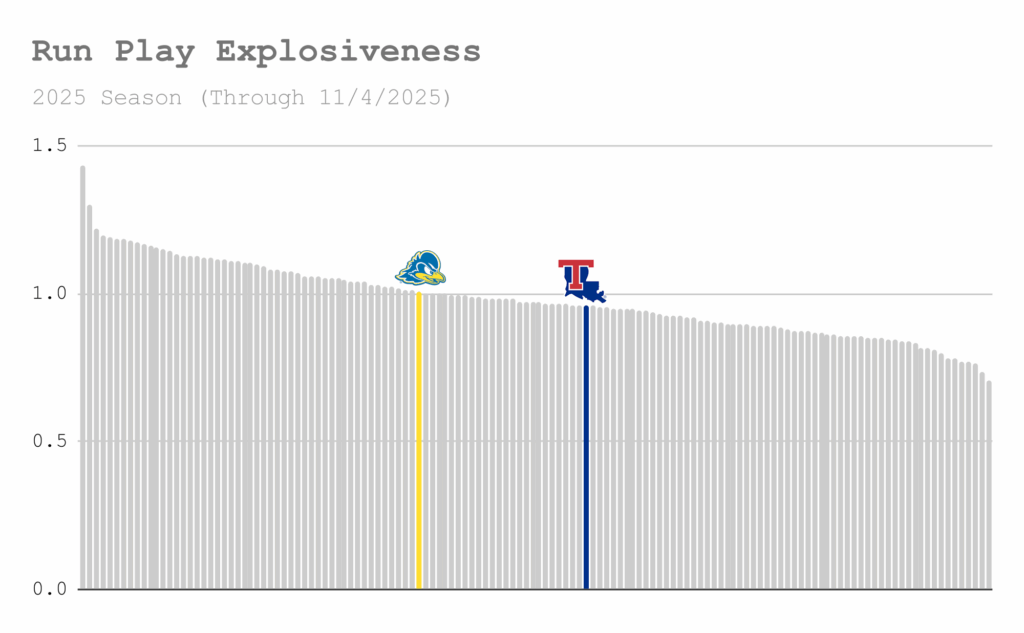
So the game may come down to patience. Which team can stay committed to its running game even through the two-yard gains and stuffed runs, long enough to finally hit one that breaks the game open.
Louisiana Tech’s defense has built its identity on shutting down opposing rushing attacks, and it’s paid off so far. But against Delaware, they’ll be facing a mirror image of themselves – a team that’s nearly as disciplined against the run and just as vulnerable when the dam finally bursts.
If either team can find that one big play on the ground, it might be the difference between another frustrating Saturday and a statement win in November.
—
Nathan is also a contributor to gtpdd.dog, a lighthearted Louisiana Tech blog. Be sure to check out @gotechplsdntdie on Twitter.








